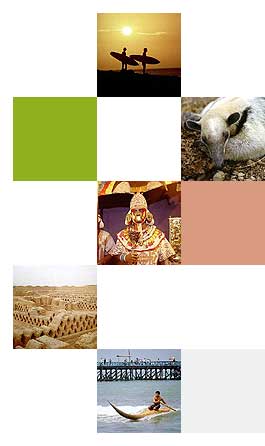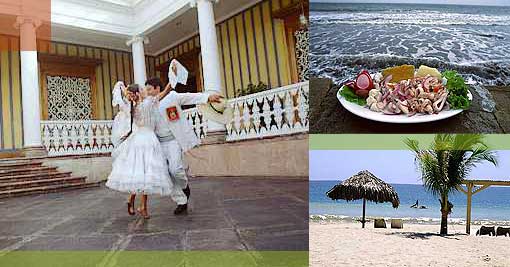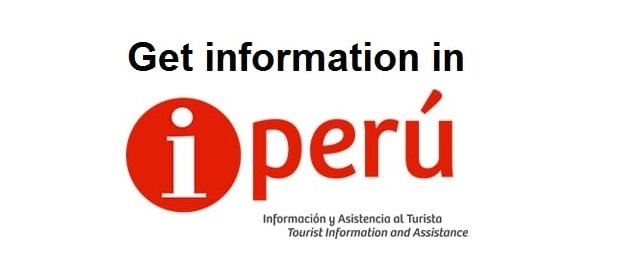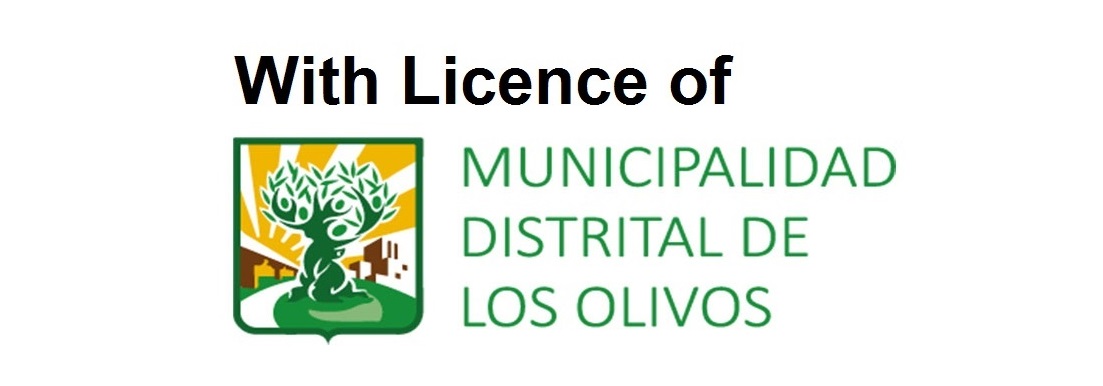

MAIN DESTINIES
NORTH COAST
 North Coast, desert but provided with a system of very effective irrigation constitute the granary of Peru, which supply with water in kitchen garden and fields where rice is harvest, sugar cane and fruit trees.
North Coast, desert but provided with a system of very effective irrigation constitute the granary of Peru, which supply with water in kitchen garden and fields where rice is harvest, sugar cane and fruit trees.
Though less known by the tourism, the north Coast of Peru, which includes the cities of Trujillo, Chiclayo, Cajamarca and its surroundings, corresponds to a region of interesting colonial and archaeological attractions.
Trujillo, is the third big city of Peru, and is characterized by its colonial, style present in the Main Square, Cathedral and multiple mansions. Nevertheless, its principal attraction is Chan Chan's archaeological site close to the pyramids Huaca Esmeralda, Huaca Arco iris, Huacas of the Sun and of the Moon.
In Trujillo the spring is eternal. Sun always shines and fills of light up to the corners most hidden of the capital of the department of La Libertad, delighting the soul of an affable and cordial people, who lives proud of their citadels of mud and adobe constructed by the Chimús and the Mochicas; of the lordly houses, inheritance of the colonial epoch and of the whiteness of the Republic; and of the Marinera, the national dance of Peru, a whirlwind of sensuality and elegance from which the love is born.
Located on the north coast of Peru, Trujillo was founded in 1534 by Don Diego de Almagro, that on having stopped in the valley of the river Moche, going to Pachacamac (Lima), "found a place profitable and suitable to found a city", which he baptized with the same name of the Spanish city in which the conqueror Francisco Pizarro was born.
Since its foundation, Trujillo showed a rapid development due to the fertility of the valley and the effort of their population, who built lordly houses, in what stand out the artistic gratings of wrought iron, which give them a touch of distinction and elegance to the Trujillo architecture.
But the charm of Trujillo goes beyond its colonial past and got into the pre-Hispanic epoch. In Moche's valley, it is Chan-Chan's city, the capital of the Kingdom of the Great Chimú, considered the biggest city of mud of the world (20 square kilometers of extension) and that is only comparable to Teotihuacan's archaeological ruins in Mexico or the old cities of Egypt.
The Huaca of the Sun, pyramid staggered of 20 meters of altitude, the Huaca of the Moon, where amazing murals that represent the rituals of the Mochicas can be appreciated, and the Complex of El Brujo, who stands out for a pyramid of adobe of 30 meters of height and more than 15 centuries of antiquity, demonstrate the greatness of the first inhabitants of the north coast of Peru.
Centuries have passed and they have given the reason to don Diego de Almagro. The Moche valley was a profitable and suitable place to found a city, there is no more doubts about it and everybody that have gone to Trujillo know about the land of the Sun and the eternal spring.

Chiclayo, is a modern city dedicated to the trade, nevertheless in the 80's on its surroundings an important find was discovered, the tomb of the "Señor de Sipán", one of the principal leaders of the Mochica's Culture. Though the sepulcher was plundered, most of the objects that were accompanying the "Señor of Sipán" can be seen in the museum Bruning. Near Sipán they find also Túcume's ruins.
The department of Lambayeque is located in the north western part of Peru. Its extension is 13,736 square kilometers; it limits to the north with Piura, to the south with La Libertad, for the East with Cajamarca and for the west with the Pacific Ocean. It is considered to be the department "more costeño", since only a small extension of its territory gets to the Mountains. It has a population of almost a million of inhabitants. Its capital is the city of Chiclayo, which has a pleasant climate, with an annual average temperature of 22.3°C, and in the summer it overcomes the 32°C.
Other important cities are Ferreñafe, Lambayeque, Motupe and Saña.
















